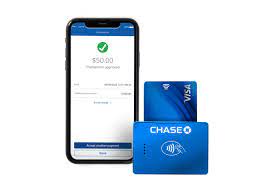Business objectives must be defined in order for a company to grow. It lays out a clear roadmap for what the company wants to accomplish in the future and includes a checklist for realigning strategies, if necessary, to reach goals. Employees must be informed about the objectives and their roles in accomplishing them, which is a crucial component of this process.
An Objectives and Key Results (OKR) solution tool aids in the consolidation of these activities. It enables companies to design, communicate, track, and measure their goals and critical outcomes. This article covers everything you would need to know about OKR Software.
What is OKR software?
Objectives and Key Results (OKR) software is a tool that aids firms in defining and evaluating their goals and objectives. Users can use the platform to visualize goals, measure progress, interact with team members, and collect peer comments with this software.
Furthermore, OKR software aids organizations in aligning and tracking their employees’ efforts toward the company’s core goals. And for the most part, dashboards to visualize corporate, team, and individual goals; graphs and charts to measure progress on important objectives; and team communication facilities to conduct employee reviews and peer-to-peer feedback sessions are just a few of the features available.
What are some of the most typical characteristics of OKR software?
Before you invest in OKR software for your company, familiarize yourself with the following features:
#1. OKR Management:
You can use built-in templates or start from scratch to create objectives and key outcomes for the organization, teams, and individuals. Also, you can set deadlines for achieving those goals, using a central platform to link individual goals with departmental/company-wide goals.
#2. Feedback Management:
It helps to solicit and compile input from employees and other stakeholders on established objectives. This will serve as a guide in restructuring techniques and methodologies as needed in light of feedbacks.
#3. Progress Tracking:
Setting measurable key results and defining key performance indicators can help you track your progress toward your goals.
#4. Gamification:
The gamification features will help to make goals for assessing workflows more enticing, such as allowing employees to thank peers with high-fives and stars or competing on leaderboards.
#5. Reporting:
You can also examine staff performance records to learn what worked and what didn’t. These reports can be used to forecast and plan resources in order to meet organizational goals on schedule.
OKR Software’s Advantages
Small firms can use OKR software to provide a single repository for employees to understand their objectives (what needs to be accomplished) and to ease the tracking of important results (specified and measurable actions) that define how employees work toward their goals.
The following are some of the main advantages of using OKR solutions:
- Automate manual processes to save time: HR teams can save time by using the program instead of manually tracking team goals and important results on spreadsheets.
- Maintain a central treasury of information that is easily accessible: Details on team/individual goals and critical results are kept in one central spot, making it easier to access.
- Enhanced Collaboration and communication within the team: Team workspaces are included in OKR software, allowing employees to discuss goals, answer questions, and provide feedback.
What are the possibilities for deploying OKR software?
When considering purchasing OKR software, you should be aware of the following deployment options:
#1. Cloud-based deployment:
Users can access cloud-based OKR software via the internet using a web browser or a mobile app. Aside from the monthly/yearly subscription payments, they don’t have to pay anything else. The vendor is in charge of hosting and maintenance.
#2. On-premise deployment:
Users install the OKR software on their own servers or computers. To use the software, users must purchase a license and pay additional fees for upgrades and maintenance.
Before you buy, ask this key question to a vendor; What is the normal installation time and cost of your product?
What Type of Buyer Are You?
OKR software aids in the organizing of small businesses. However, because there are so many OKR solutions on the market, SMBs should carefully consider their requirements before investing in one.
The two most common categories of OKR software purchasers are listed below. When choosing an OKR solution, recognizing the differences can help you better understand your requirements:
#1. Small Business Buyers:
These buyers often work for companies with fewer than 100 people who are looking for a cost-effective and user-friendly OKR solution. Let’s look at why these are the most pressing concerns:
Usability:
Users in small businesses don’t have a lot of time to customize and learn new software. They require tools with pre-installed capabilities, whereas a larger company prefers solutions that allow for more customization.
Basically, small businesses demand features like drag-and-drop interfaces that reduce the number of clicks needed to complete a task. Furthermore, centralization, which makes information easily searchable, is an important usability factor. For instance, users should be able to receive and share feedback on their goals in one central location.
Visual dashboards should also make tracking performance reports simple and quick.
Affordability:
This is a critical consideration. Small enterprises hardly need an OKR tool with a large number of capabilities. Instead, their primary goal is to confirm the return on investment (ROI) of overall software ownership expenses. As a result, they’re looking for vendors who don’t charge extra to add new customers or provide priority phone assistance.
#2. Enterprise Buyers:
These kind of buyers have specific needs for managing the OKRs of a large workforce that is typically dispersed across multiple locations. They require a tool with a vast number of capabilities and the ability to integrate with third-party applications in order to meet all of their business requirements.
Functionality:
One of the most important needs for enterprise shoppers is a long-range of functions. For example, they seek precise reporting capabilities that enable them to compare and analyze current and historical OKR performance of employees.
Also, they want to be able to quickly obtain personalized reports in a variety of forms, including PDF, XLS, and HTML, that include information on who owns specific goals, when they’ll be completed, and other pertinent information.
Furthermore, task assignment and tracking, visual organizational charts, white-label choices, and real-time push alerts for mobile applications are other desirable features for these buyers.
Integrations:
Like a puzzle piece, enterprise consumers desire a technology that is ready to plug into their existing infrastructure. As a result, the OKR software must link with their existing software products, such as project management software, social collaboration solutions, and HR software, or make connections easier.
In other words, data should flow seamlessly across the various systems thanks to integrations. Users will also require a single sign-on (SSO) integration, which will allow scattered teams to effortlessly utilize the product.
Which OKR Management Software Features Do You Require?
Before you choose your OKR software, there are a few features you should check at.
- Flexibility at the enterprise level: Look for an OKR platform that allows you to adopt multiple OKR best practices and methods at any moment and make necessary changes to your business process.
- Scalable: If you’re a growing company, you’ll need an OKR software that can keep up with your expanding team size and business procedure without causing bottlenecks. For instance, consider unlimited OKR coaching.
- Real-Time Progress Tracking: It should include built-in tools and proper integration with other programs to allow you track task progress in real-time. Basically, you won’t have to keep track of many little tools separately.
- Actionable Dashboards: Your OKR software should be able to turn figures and hard data into useful information. Basically, it should be simple for you to read and comprehend actionable data so that you can act quickly.
- User-Friendly: Make sure your OKR software is easy to integrate with your existing tools, has a simple onboarding process, and doesn’t take any additional effort from your team to use.
Free OKR Tools: 55+ Best Free OKR Tools in 2023
OKR SOFTWARE FOR STARTUPS: The Best Picks in 2023 (Updated)
Best 13+ OKR Softwares in 2023 & All You Need (Updated)
OKR SOFTWARE COMPARISON: Compare 10 Best OKR Softwares in 2023






